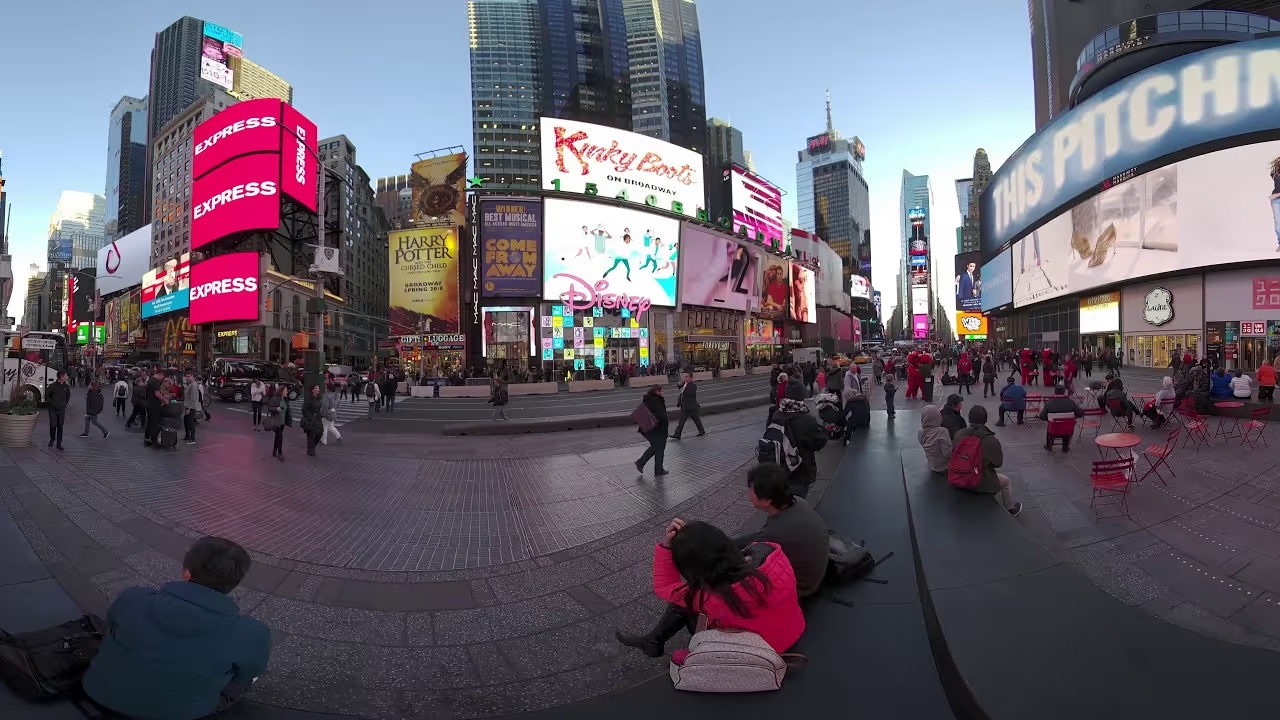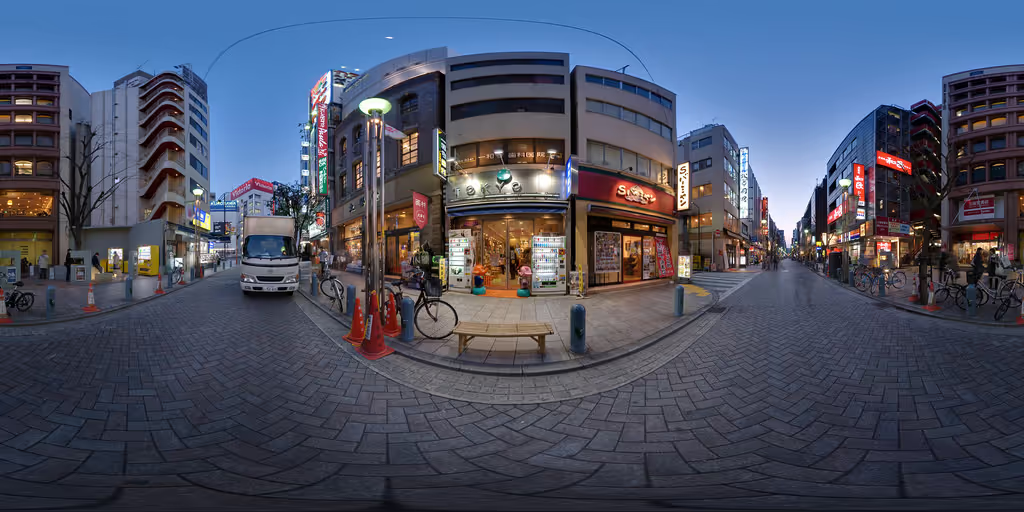Table of Contents
What is a 360 VR camera?
A 360 VR camera is a type of camera that captures panoramic images or videos in 360 degrees. It allows you to see all around you in a single frame as if you were standing in the middle of the scene yourself.
How Cameraguys work with 360 VR
A 360 VR camera typically consists of multiple lenses arranged in a circular configuration. These lenses work together to capture an image or video from all angles simultaneously. The resulting footage is then stitched together to create a seamless, spherical panorama.
360 VR Video Production Applications
360 VR cameras are often used for creating virtual reality experiences. By placing the viewer inside the panoramic scene, they can feel as if they are actually present in the environment. This can be used for gaming, entertainment, education, and even training simulations.
What are the benefits of using a 360 VR camera operator for businesses?
1. Increase engagement by working with a 360 VR cameraman or camerawoman
Using a 360 VR camera can help businesses increase their engagement and reach. By providing an immersive experience, businesses can capture the attention of potential customers and keep them engaged for extended periods of time. Additionally, 360 VR cameras can be used to create content that can be shared across social media platforms, increasing the reach of the business.
2. Improve customer experience with 360 VR camera operating
Another benefit of using a 360 VR camera is that it can help improve the customer experience. By providing customers with an immersive experience, businesses can give them a better understanding of their products or services. Additionally, 360 VR cameras can be used to create virtual tours or demonstrations that can help customers understand how to use a product or service.
3. Enhanced marketing efforts
360 VR cameras can also enhance marketing efforts by creating engaging content that potential customers will want to watch or share. Additionally, businesses can use 360 VR cameras to create virtual reality experiences that potential customers can try before they buy, which could lead to increased sales conversions.

What are some tips for businesses when using a 360 VR camera?
1. Keep the camera steady and in one place as much as possible. This will help create a smooth, immersive experience for viewers.
2. Plan your shots ahead of time and be aware of what will be in each frame. This will help you avoid any unwanted surprises or objects that may ruin the shot.
3. Be sure to capture a variety of different angles and viewpoints. This will give viewers a complete picture of what is going on and make the experience more engaging.
4. Make sure to edit your footage carefully before publishing it. This will ensure that only the best content is shared with viewers.
5 businesses that could benefit from using 360 VR camera operators
1) Real estate firms could use them to give potential buyers virtual tours of properties they are interested in purchasing without having to physically be there themselves
2) Event planners could use them to give people a taste of what an event would be like before actually attending
3) Tourist attractions could use them to give visitors an immersive look at what they can expect to see and do
4) Retailers could use them to let customers virtually try on clothes or test out products before making a purchase
5) Restaurants could use them to let customers see what their dining experience would be like before coming in
What are the different types of 360 VR cameras?
A 360 VR camera is a type of camera that allows you to capture 360-degree photos and videos. This means that you can capture an entire scene in one shot, without having to pan or move the camera. You can also view these photos and videos in VR, or virtual reality, by wearing a VR headset.
There are two main types of 360 VR cameras: panoramic and omnidirectional. Panoramic cameras have a wide field of view but cannot capture images directly above or below the camera. Omnidirectional cameras, on the other hand, have a spherical field of view and can capture images in all directions.
What are the best 360 VR cameras for businesses?
There are a few different types of 360 VR cameras on the market, each with its own set of features and price points. For businesses, the two main types of 360 VR cameras are those that capture panoramic images and those that capture spherical images.
Panoramic 360 VR cameras:
Panoramic 360 VR cameras are designed to capture wide-angle images. These cameras usually have two lenses, which allows them to capture a 180-degree field of view. This type of camera is ideal for businesses that want to create virtual tours or give customers a wider view of their products or services.
Spherical 360 VR cameras:
Spherical 360 VR cameras are designed to capture all directions at once. These cameras have multiple lenses arranged in a sphere, which allows them to capture a complete 360-degree field of view. This type of camera is ideal for businesses that want to create immersive experiences or give customers a complete view of their products or services.
How do you store and share 360 VR photos and videos?
There are many ways to store and share 360 VR photos and videos. Some people use online services such as YouTube or Facebook, while others use specific apps such as Google Street View.
Sharing
Once you have stored your 360 VR photos and videos, you can share them with others using a variety of methods. You can send links to the files via email or social media, or embed them on a website or blog. You can also create a virtual reality tour by stitching together multiple 360 VR photos and videos.
You can shoot 360 VR videos with Get Camera Crew. We have many experiences in this field. Examine our portfolio and contact us now!
People Also Asked
How to hire a 360 camera operator?
There are many ways to hire a 360-camera operator. Some people use online services such as Upwork, while others work directly with the person they want to cast in their project.
What are 360 camera operator skills?
The skills required for a 360-camera operator vary depending on the project. A photographer might need to know how to shoot panoramas, while a producer might require knowledge of 360 video editing and stitching.
How can you work with 360 camera operators for a television work or documentary?
Reach out to 360-camera operators who have produced projects that you can use as references. You might find them on social media, through their website, or by networking with other professionals.
How can you share information about your place by working with 360 camera operators?
If you want to share information about your place with 360 camera operators, make sure that the content is high quality and easy to follow. You can provide 360-camera operators with a map or a list of places to visit. You can also provide maps or lists that are easy for them to follow and use as a guide while filming in the area.
What to consider when hiring a Cameraman
You can ask these questions when hiring a cameraman:
- How many years have they been in the industry?
- What is their expertise or experience?
- Do they have a reel of work that you can watch and see for yourself if they are a professional?
- What is their work ethic like, and how do they respond to feedback?
- How many hours per week can they commit or what type of schedule can you accommodate?
How can you work with a broadcast cameraman for a 360 video?
360 videos are typically filmed with a camera rig that is attached to the center of an object. Because they're shot on one plane, 360 video has very little depth and can be difficult for a cameraman to film, especially with objects that are not flat. Therefore, a 360 video requires a broadcast camera operator who is experienced shooting on one plane and has the ability to shoot footage from multiple






